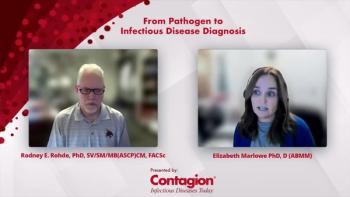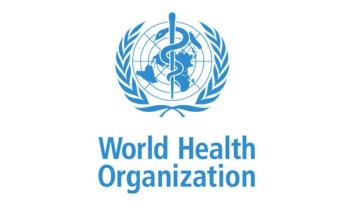Nontargeted hepatitis C virus (HCV) screening in emergency departments (EDs) identifies significantly more new infections than targeted, risk-based screening, according to results from the DETECT Hep C randomized clinical trial published on July 9 in JAMA. Among 147,498 ED patient visits randomized across 3 urban hospitals, nontargeted screening yielded 154 new HCV diagnoses compared with 115 in the targeted screening group, a 34% relative increase (relative risk, 1.34; 95% CI, 1.05-1.70; P = .02).1
The trial, conducted at EDs in Denver, Colorado; Baltimore, Maryland; and Jackson, Mississippi, assigned patients 18 years or older to one of 2 screening strategies as part of routine care. In the nontargeted group (n = 73,847), HCV testing was offered universally, leading to 9867 patients being tested (13.4%) and 154 new diagnoses. In the targeted group (n = 73,651), patients were screened based on documented risk factors, resulting in 23,400 (31.8%) being identified as at risk, 4640 tested (6.3%), and 115 new HCV cases detected. The demographic profile of participants included a median age of 41 years (IQR, 29-57), 51.5% male, 42.3% Black, 20.9% Hispanic, and 32.2% White.1
Despite improved detection rates with nontargeted screening, linkage to care and treatment initiation remained limited across both groups. Among patients with newly diagnosed HCV infection, only 19.5% in the nontargeted group and 24.3% in the targeted group engaged in follow-up care. Direct-acting antiviral therapy was initiated in 15.6% vs 17.4%, was completed in 12.3% vs 12.2%, and resulted in sustained virologic response at 12 weeks (SVR12) in just 9.1% vs 9.6% of patients, respectively.1
Q&A With Jason Haukoos, MD, MSc, FACEP, on the DETECT Hep C Trial
Contagion: What barriers do you believe are most responsible for the low linkage-to-care (LTC) rates across both screening arms? Were there site-specific differences in follow-up infrastructure that influenced outcomes?
Haukoos: Linkage-to-care across both arms was most often done through clinician referral, which is the functional standard of care from emergency departments, but it’s also passive—relying on patients to actively engage in follow-up. The low rates of linkage were likely multifactorial, involving both system-level and individual-level barriers. For example, many patients who tested positive for HCV were experiencing homelessness at the time. Even with access to care information and some assistance with scheduling, it can be very difficult to address HCV in those circumstances.
Two of the 3 sites (Denver and Jackson) were also naive to HCV screening in the ED prior to this trial, although all sites had experience with infectious disease screening, particularly HIV. As noted in the study supplement, LTC and HCV care continuum outcomes were similar across sites. In Denver, we concurrently conducted a clinical trial comparing linkage navigation vs clinician referral [presented at CROI (Conference on Retroviruses and Opportunistic Infections) 2024, with a manuscript forthcoming], which showed a significant—though not perfect—improvement in LTC and HCV outcomes.
Contagion: Given that nontargeted screening identified more cases but had lower testing uptake (13.4% vs 6.3%), do you see operational or staffing limitations as a major obstacle to wider implementation in busy EDs?
Haukoos: The percentages you’re referencing represent HCV test completion among all eligible patients, which speaks to the concept of "reach." Despite the lower proportion, nontargeted screening still led to approximately twice as many individuals completing HCV testing compared with targeted screening.
If the question is why the overall percentages weren’t higher, that’s more complex. Real-world integration of HCV screening in busy, high-acuity EDs is difficult. Many patients opt out because they don’t perceive themselves at risk, and there are also logistical challenges when implementing this alongside routine ED care. These results mirror our previous findings with HIV screening [see Haukoos et al JAMA Network Open 2021]. Our team is currently conducting secondary analyses to better understand test acceptance, particularly among patients with language barriers and homelessness.
Contagion: Did the study capture data on coinfections (eg, HIV, HBV [hepatitis B virus]) or substance use? How might these comorbidities have influenced follow-up care or treatment engagement?
Haukoos: Yes, we did collect data on coinfections, though they weren’t included in the primary manuscript. Among newly diagnosed HCV cases, 4 had HBV, 10 had HIV, and 1 had both. We also collected data on substance use, focusing primarily on injection drug use [IDU]. Recent history of IDU was significantly associated with poorer outcomes in LTC and the HCV care continuum (see supplemental eFigures 12-15). Engaging this high-risk group in downstream care is essential but remains a persistent challenge. More research is needed to determine the most effective approaches.
Contagion: In your view, what would an ideal postdiagnosis care model look like for patients with ED-diagnosed HCV—especially one that could improve SVR12 rates without overburdening ED workflows?
Haukoos: This remains an area in need of further development, though the DETECT Hep C Linkage-to-Care Trial will provide valuable guidance. I believe we can build on our experience with HIV care linkage, where we’ve seen encouraging results in terms of viral suppression and care continuity. For HCV, a "warm hand-off" model—rather than a passive referral—paired with systemic processes for patient engagement would be ideal. The key is balancing effective care with the unique demands of emergency medicine.
What You Need To Know
Nontargeted HCV screening in emergency departments identified 34% more new infections than targeted, risk-based screening.
Less than 10% of newly diagnosed patients in either group completed treatment and achieved sustained virologic response at 12 weeks.
The findings reveal a critical gap between diagnosis and care, highlighting the need for integrated treatment pathways within or connected to ED settings.
A January 2025 study published in The American Journal of Emergency Medicine further supports the role of emergency departments in HCV screening while echoing concerns raised by the DETECT Hep C trial about poor linkage to care. Conducted at a safety-net hospital, the study assessed universal HCV screening from 2019 to 2022 and found that among 9511 ED patients screened, 6.9% had anti–HCV-positive [disease] and 3.4% had active infection (HCV RNA positive). Despite this relatively high prevalence, only 24.1% of those with confirmed HCV were successfully linked to care and just 17.8% initiated antiviral treatment. Notably, HCV prevalence was significantly higher in the ED cohort compared with outpatient clinics within the same health system, highlighting the ED’s potential as a critical access point for diagnosis among underserved populations.2
The CDC [Centers for Disease Control and Prevention]’s 2025 updated recommendations endorse universal hepatitis C screening for all adults 18 and older and all pregnant women during each pregnancy, reflecting a shift away from risk-based testing toward broader, population-level screening. This aligns closely with the DETECT Hep C trial’s finding that nontargeted [universal] screening in emergency departments identifies more new HCV infections than targeted approaches.3
[The] CDC emphasizes the importance of rapid diagnosis and automatic reflex testing (HCV RNA after a reactive antibody test) to reduce delays between screening and treatment initiation, an area highlighted as a gap in the DETECT trial and similar ED studies. The CDC also stresses that many infected individuals are asymptomatic and unaware of their status, underscoring the critical need for universal screening in high-volume clinical settings like EDs.3
Moreover, the CDC outlines priority populations for frequent testing but encourages testing [for] anyone who requests it, supporting a low-threshold, stigma-free approach. Their guidance on streamlined testing and linkage to care complements the DETECT trial’s call for innovative models to improve the hepatitis C care continuum, especially among underserved populations often seen in ED.3
Together, these findings underscore not only the effectiveness of nontargeted screening in high-throughput settings such as EDs but also the substantial drop-off along the HCV care continuum from diagnosis to treatment and cure. According to the authors, urgent development of innovative strategies is needed to enhance linkage to care and ensure treatment follow-through in populations diagnosed in emergency settings.
References
1. Haukoos J, Rothman RE, Galbraith JW, et al. Hepatitis C screening in emergency departments: the DETECT Hep C randomized clinical trial. JAMA. Published online July 9, 2025. Accessed July 10, 2025. doi:10.1001/jama.2025.10563
2. Lue N, Lom J, Manguso E, et al. Hepatitis C testing and linkage to care in a safety-net hospital emergency department. Am J Emerg Med. 2025;94:133-139. doi:10.1016/j.ajem.2025.04.046
3. Clinical screening and diagnosis for hepatitis C. Centers for Disease Control and Prevention. January 29, 2025. Accessed July 10, 2025. https://www.cdc.gov/hepatitis-c/hcp/diagnosis-testing/index.html?


















































































































































































































































































